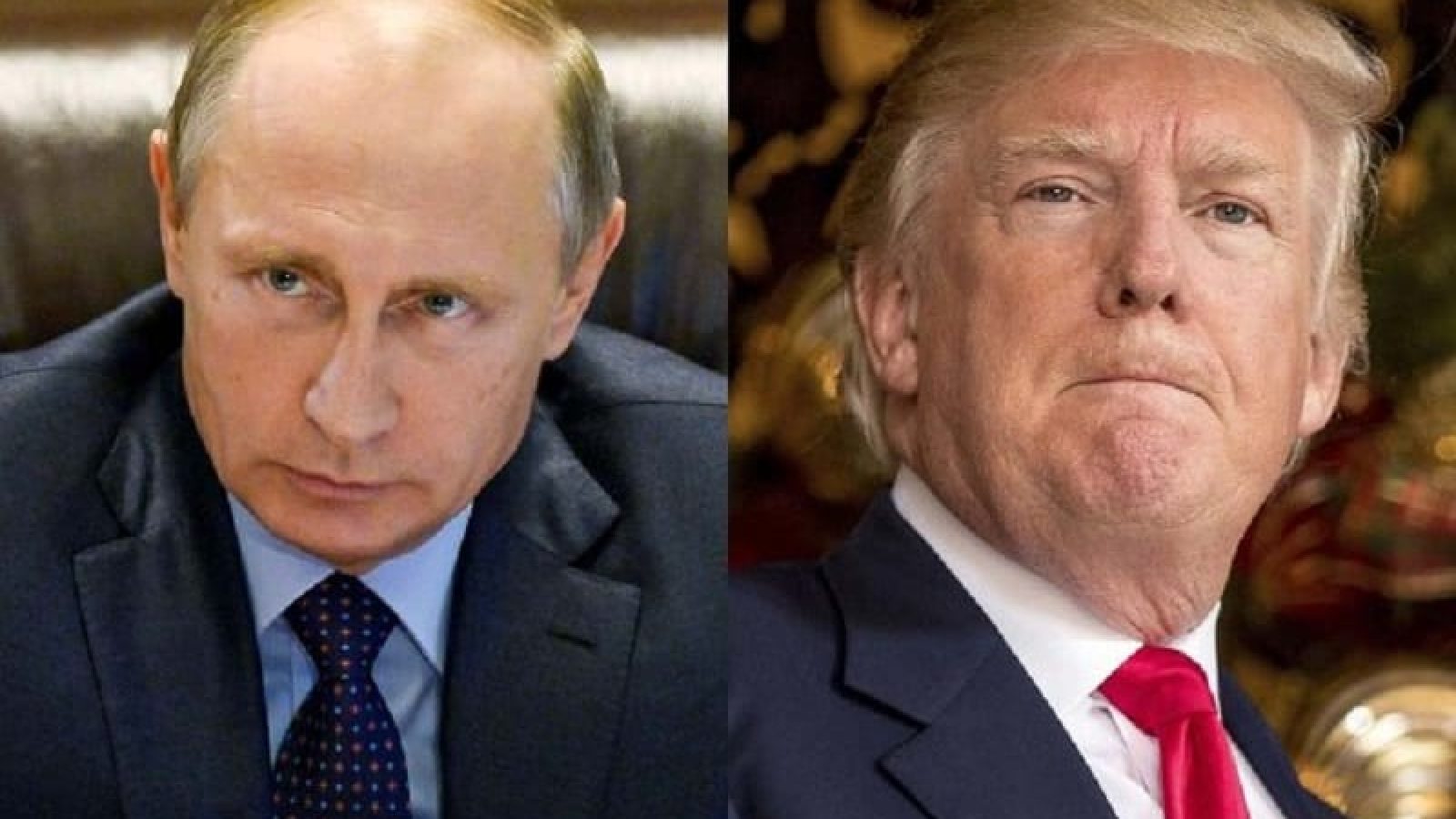A top Russian political scientist has warned that the West could be on the brink of acting recklessly as it sees its influence dwindle in the wake of the Ukraine-Russia conflict.
Article by Cassie B., republished with permission from Naturalnews.com
Speaking at a roundtable discussion this week, Russian Academy of Sciences Institute of World Economy and International Relations Director Aleksandr Dynkin cautioned that the world is “on the edge of an abyss” amid a significant shift of power.
While the seat of the global world order used to be in Europe, it has been in the U.S. for quite some time. However, Dynkin believes this is all about to change as Russia, India and China enjoy growing influence that will be further bolstered by the conflict in Ukraine and its fallout. He said that the “political East” is poised to become an equal partner to the “political West.”
India and China have resisted calls to condemn Russia over its behavior in Ukraine, and Indian Prime Minister Narendra Modi even paid Moscow a visit this week and sat down with Russian President Vladimir Putin.
The West’s declining global influence and the mental struggles of U.S. President Joe Biden could spur desperation and inspire the West to make “reckless” decisions, according to Dynkin.
He said the last time the world was this close to a full-fledged disaster was during the Cuban missile crisis six decades ago.
Russia is proactively pursuing the formation of a new world order
Russian President Vladimir Putin has been embarking on a diplomatic offensive with developing countries in Africa and Asia, appealing to their frustrations with the West by providing them with an alternative.
In a summit held last week, he proposed setting up a new “Eurasian architecture of cooperation, indivisible security and development.”
He explained: “This new framework should replace the obsolete Europe-centric and Euro-Atlantic models that granted unilateral advantages to certain states.”
Putin is well aware that the global South is an important part of achieving his goal, and he has been working with China to shift the global balance of power in their favor.
This October, Russia is hosting a summit for the BRICS block of nations, which added four new countries to its membership earlier this year. More than 30 are still waiting for their applications to be approved, including Thailand and Malaysia.
It is important to note that BRICS differs from the EU and NATO in the sense that it has a loose framework and its requirements for entry are considered far less strict. Emerging countries can benefit economically by joining, they maintain, without the need to become a democracy or align their economy with Western standards.
In addition to courting widespread support for a multipolar world order via BRICS, Putin is also looking to extend an anti-America coalition that will also include the Middle East and North Korea. To that end, he recently visited North Korea and met with dictator Kim Jong Un. The two leaders announced a new pact that will provide mutual military assistance between the two countries should one of them be attacked. He also announced that Russia could provide weapons to North Korea, which could have a destabilizing effect on the Korean Peninsula and U.S. ally South Korea.
Meanwhile, political uncertainty in the U.S. ahead of the presidential election and divisions between Western nations over the war and genocide in Gaza have led to some cracks in Western alliances. Although some emerging countries may not necessarily side with Putin on all the issues, many are willing to put those reservations aside in hopes of strengthening their economies and taking on a more prominent role on the world stage.
Sources for this article include:
RELATED REPORT:
Here’s Why I Think An “EMP” Is The Biggest Threat To America Right Now
What is the biggest threat to America….right now?
Joe Biden? Certainly he’s not helping things.
Barack Obama? The puppet master behind Biden.
Soros? The puppet master behind Biden.
China? Always on the list.
Democrats?
RINOs?
Election theft?
Nuclear attack?
All of these things are serious threats, but I want to tell you about something often not discussed….but the impact could be bigger than anything above.
Yes, really.
It’s called an EMP attack.
What’s an “EMP” anyway?
Good question!
An EMP, or Electromagnetic Pulse, is a powerful burst of energy that can disrupt or damage electronic devices and electrical systems. It’s like a super strong wave of energy that can mess with anything that uses electricity. This includes cell phones, computers, cars, and even the power grid that gives electricity to homes and businesses.
You may have heard about it before, but it’s not commonly discussed.
So let me break it all down for you…
Likelihood of an EMP Attack:
- Technological Feasibility: Creating an effective EMP weapon is technologically challenging. It typically involves nuclear detonations at high altitudes or sophisticated non-nuclear devices. The complexity of these technologies limits their availability mostly to advanced military powers.
- Global Politics and Deterrence: The United States has strong diplomatic relations and defense systems, which act as deterrents against direct attacks from other major powers. The doctrine of mutually assured destruction (MAD) often serves as a deterrent against nuclear-based EMP attacks, as such an attack could lead to a full-scale nuclear war.
- Non-State Actors: The greater risk may come from non-state actors (like terrorist groups) who might not be deterred by traditional means. However, their access to the necessary technology is typically quite limited.
- Natural EMPs: There is also the risk of a natural EMP caused by a solar storm, similar to the Carrington Event of 1859. While not a deliberate attack, the effects could be similarly disruptive.
Most Likely Ways an EMP Could Happen:
- High-Altitude Nuclear Detonation: A nuclear bomb detonated high in the atmosphere could create a powerful EMP. This would require intercontinental ballistic missile (ICBM) capabilities.
- Non-Nuclear EMP Devices: These devices can be designed to target specific areas or systems without the broader destruction caused by nuclear weapons. However, their effective range and power are generally less than a nuclear EMP.
- Cyber-Physical Attacks: A coordinated cyber-attack on power grids and electronic systems could mimic some effects of an EMP, though technically different.
- Solar Storms: A severe solar storm hitting the Earth could create natural EMP effects, disrupting electrical systems and communications.
The Fallout From an EMP:
- Power Outage: EMPs can knock out electricity everywhere, like turning off a big light switch for a whole city or even a country.
- No Internet or Phones: Imagine not being able to call, text, or use the internet. That’s what happens with an EMP.
- Water Supply Issues: Without power, getting clean water to homes and buildings becomes really hard.
- Food Shortage: Stores need electricity to keep food fresh. Without it, a lot of food can go bad quickly.
- No Heating or Air Conditioning: Houses and buildings would lose heating in winter and air conditioning in summer.
- Hospitals Struggle: Hospitals rely on power for life-saving equipment. An EMP could put many lives at risk.
- Transportation Problems: Cars, buses, and trains might not work, making it tough to get around.
- Banking and Money Problems: ATMs and credit card machines need power, so buying things could become really difficult.
- Emergency Services Disrupted: Police, fire, and ambulance services could be severely affected.
- Danger to Airplanes: Planes flying when an EMP hits could have serious trouble.
- Schools Closing: With no power, schools might have to close.
- No Radio or TV: News and entertainment through radio and TV would be cut off.
- Damage to Electronics: An EMP can break things like computers, TVs, and even some toys.
- Industrial Shutdowns: Factories and other big workplaces would have to stop work.
- Fuel Shortages: Gas stations need power to pump gas, so cars might run out of fuel.
- Increased Crime: Without alarms or streetlights, there might be more thefts and other crimes.
- Health Risks from Spoiled Food: Without fridges, food can spoil and make people sick.
- Waste Disposal Problems: Trash and sewage systems might not work properly.
- Mental Health Stress: The sudden change and uncertainty can be really stressful and scary for people.
- Long-Term Recovery: Fixing everything after an EMP can take a really long time and be very hard.
Life In America Following an EMP Attack:
Week 1: Immediate Chaos and Confusion
- In the immediate aftermath, there would be widespread panic and confusion. The EMP, having disabled all electronics, would leave individuals without means of communication; cell phones, internet, and radio would be rendered useless.
- Transportation systems would grind to a halt. Modern vehicles with electronic components would fail, leading to widespread traffic jams and stranded individuals.
- Emergency services would be severely hampered, struggling to respond to incidents without their usual communication and transportation infrastructure.
- There would be a run on stores for essential supplies as people quickly realize the severity of the situation. This could lead to shortages and even looting in some areas.
Week 2-3: Adapting to the New Reality
- Communities would begin to adapt. Those with older, non-electronic vehicles and equipment would find themselves at an advantage.
- People would turn to bicycles, horses, or simply walking for transportation.
- The lack of refrigeration and electronic banking systems would lead to a reliance on cash transactions and bartering. Localized trading systems might emerge.
- Battery-operated or hand-crank radios would become vital sources of information, assuming some radio stations could continue broadcasting.
- There would be a significant increase in manual labor as machines and automated systems used in manufacturing and agriculture would be non-operational.
Week 4 and Beyond: Long-Term Adjustments
- Social structures would begin to shift, with communities becoming more localized and self-sufficient. Neighbors would need to work together for survival, leading to a resurgence of community-oriented living.
- Food shortages could become a serious issue. Without modern transportation and preservation methods, communities would have to rely on locally sourced food, leading to a rise in gardening and small-scale farming.
- Health care would face severe challenges. Hospitals would struggle without modern equipment, leading to a reliance on more traditional methods of treatment and an increased need for medical knowledge within communities.
- Education would revert to non-digital methods. Schools, if they remained open, would rely on books and oral teaching methods.
- Over time, there might be efforts to rebuild some form of electrical infrastructure, but this would be a slow and difficult process given the extent of the damage caused by the EMP.
Now you see what I’m talking about?
As usual, I don’t like to just leave you hanging with the bad news….I like to give you solutions!
And I have one here.
You know I’ve got you covered!
There ARE things you can do right now to make sure you and your family will stay safe and be able to survive in the event we end up living through an EMP strike.
Imagine losing all lights and heating in the winter?
Negative 10 degrees outside and suddenly you’re back in the stone age?
Follow the link below to find out what you can do right now.
Let’s all stay safe together, ok?




Join the conversation!
Please share your thoughts about this article below. We value your opinions, and would love to see you add to the discussion!